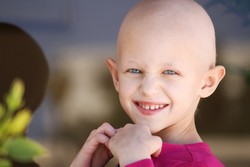Follow-up guidelines for childhood cancer survivors
Improvements in the treatment of childhood cancer over the years have resulted in a significant increase of cancer survivors. Unfortunately, over time nearly 75 % of them may experience treatment-related complications including second tumours, heart dysfunction as well as metabolic and endocrine problems. These pose the risk of inducing chronic problems and disability, and may even threaten the life expectancy of childhood cancer survivors. To reduce the consequences of late effects of cancer therapy and improve quality of life, long-term follow-up care is required to facilitate prompt intervention. In turn, this requires identification and appropriate management of complications as well as efficient use of health services according to specific guidelines. To address this need, the EU-funded PANCARESURFUP (PCSF)(opens in new window) (PanCare childhood and adolescent cancer survivor care and follow-up studies) project proposed to integrate research and health services across Europe by performing follow-up studies. The project originated from the PanCare network(opens in new window) and brought together European experts from clinical medicine and epidemiology. The key objective was to investigate specific effects of treatment on childhood cancer survivors later in life and produce guidelines on the management of these and other risks. Toxicity of anti-cancer treatment later in life The consortium established a pan-European cohort of survivors of childhood cancer and investigated the occurrence of heart problems, second primary tumours and late mortality. ‘This pan-European study pooled patients from large national, regional and hospital-based registries, thus becoming the largest study of childhood cancers in the world of its kind’ project co-ordinator Dr Hjorth explains, ‘with a cohort of 115 000 childhood cancer patients of which 84 000 were five-year survivors’. Scientists also considered the impact of low doses of radiotherapy and chemotherapy on the risk of developing second tumours (in almost 70 000 five-year survivors) and cardiac problems (in over 37 000 five-year survivors). ‘We wanted to estimate how much radiation various parts of the body receive during radiotherapy for childhood cancer,’ he continues. In this context, the consortium correlated the long-term clinical outcome with the dose of radiation received by the different parts of the body using specialised dosimetry software exploring the dose-response relationship. It was thus possible to more accurately estimate the risks arising from very specific therapies for possibly life-threatening late effects. Late mortality is death more than five years after diagnosis. PCSF investigated and validated the causes of death in the largest number of five-year survivors (> 75 000) ever and the study is on-going. Clinical guidelines The consortium collected information of existing follow-up practices and evaluated the concordance and discordance of these in different countries. They generated harmonised guidelines that aimed to reduce healthcare costs and optimize follow-up care. Furthermore, transition care practices should ensure that age-appropriate healthcare is provided to childhood cancer survivors. With respect to children that had received ionising radiation to the chest, PCSF partners were part in formulating breast cancer surveillance guidelines, emphasising the increased breast cancer risk of those patients. The guideline stated that surveillance should be initiated at the age of 25 or 8 years after radiation. Similarly, scientists determined the risk of developing second sarcomas of bone and soft tissue, as well as second carcinomas of digestive tract and the genitourinary system as a result of cancer treatment. Efforts went also towards empowering and educating survivors and healthcare professionals. ‘Overall, says Dr Hjorth, by increasing the knowledge of the late effects caused by cancer treatment we will inform future cancer therapies and allow childhood cancer survivors to lead the best possible lives in the future’.







